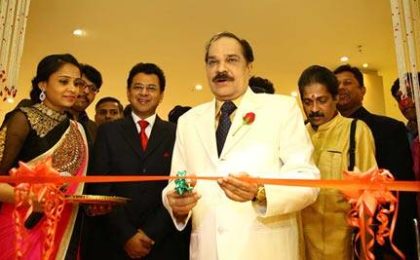Chris Hemsworth’s Thor frequently refers to himself due to the fact the “maximum effective Avenger” – an idealistic manifestation of masculinity beyond the achieve of everyday mortal men.
Sure, this is typically accomplished for laughs, but if we look beyond the comedy, there can be an interesting message about what it technique to be someone underpinning the Thor franchise. It’s a message that has shifted and changed over the past decade, and now not normally for the better.
In the present day instalment, Thor: Love and Thunder , there is not one Thor but two: step forward the Mighty Thor, withinside the guise of the original’s one-time love, Jane Foster, accomplished thru manner of manner of Natalie Portman.
Even aleven though this incarnation of Thor is a pastiche of masculine superheroes, the cues of stereotypical “regular” hypermasculinity were however at the center of the movie. Yes, the goal goal marketplace were endorsed to snigger at Thor’s vanity and roll their eyes at his insufferable hubris. But, withinside the end, it have become his superior strength and aggression, combined with the love of a “accurate woman” – Jane Foster – that received the day in a celebration of hypermasculine prowess.
Playing with masculinity
It have become all enormous Hollywood movement hero fare, and this continued into the second instalment withinside the franchise, Alan Taylor’s Thor: The Dark World (2013), further to Joss Whedon’s cross-franchise The Avengers (2012) and Avengers: Age of Ultron (2015).
It wasn’t until New Zealand actor/director Taika Waititi took the helm for the 1/3 instalment, Thor: Ragnarok (2017), that we began out out to appearance a real shift withinside the instance of Thor’s masculinity. Here, it’s miles celebrated for its ridiculousness now not its effectiveness, planting the seeds for a ultra-modern interpretation of the manner the hypermasculine can be understood in regular culture.
In the Russo brothers’ Avengers: Endgame (2019), the reimagining of Thor’s masculinity took a possibly elaborate turn. Having failed to prevent Josh Brolin’s Thanos – the last lousy guy withinside the MCU – from erasing half of of life withinside the universe in Avengers: Infinity War (2018), Thor slips into depression.
In his depressive state, he is stripped of his masculine prowess. Now inhabiting a fat body that is exposed for comedic effect, Thor’s depression is correlated with laziness, a lack of personal hygiene and emotional instability.

In this new guise, he is dwindled as a member of the Avengers, collectively alongside together along with his feature as peak masculinity now taken thru manner of manner of Mark Ruffalo’s Hulk person who has emerge as Professor Hulk – a combination of the brute strength of the Hulk and superior thoughts of Bruce Banner. “Fat” Thor is a jokey decide – the inverse of hypermasculinity.
The new best (spoiler alert!)
Things are one-of-a-type in Taika Waititi’s present day Thor: Love and Thunder (2022). In the hollow montage of the movie, Thor returns his body to the hypermasculine form. Again it’s miles ridiculous – as ridiculous due to the fact the large screaming goats that deliver his region boat all through the universe.
He stays an exaggerated uber-muscled masculine presence, simultaneously a decide of ridicule and spectacle. He is to be consumed or scoffed at depending on your preference. Or possibly even every.
Jane Foster’s reimagining due to the fact the Mighty Thor introduces a ultra-modern gender dynamic into the franchise. The Mighty Thor is definitely as powerful as Thor, or possibly even greater so, as she entails his rescue on severa occasions. Yet Thor’s masculinity does now not collapse or enter catastrophe withinside the face of powerful femininity.
In the end he works with the Mighty Thor as an same to shop the day. The arrival of this female Thor incarnation withinside the story amplifies the absurdity of Thor’s masculine hubris, but it does so in a way that still allows the goal goal marketplace to revel in Thor’s laughable excesses.
Even aleven aleven though the important relationship explored withinside the movie is heterosexual, Thor’s masculinity is not rigidly heterosexual, as validated in an amusing scene in which he gazes into the eyes of Chris Pratt’s Star Lord, at the same time as asked about people he loves.
In Love and Thunder, Thor’s hypermasculinity is complex: conceited and hubristic, but moreover caring. His supernatural strength motives and solves problems. It is is framed as aspirational and childlike, together with at the same time as, near the end of the movie, he shares his powers (temporarily) with the youngsters he has were given right all the way down to rescue. He is every a saviour and in need of saving.
Waititi’s Thors live in a reciprocal dynamic. We discover in flashback that it have become Hemsworth’s Thor, in asking his hammer Mjölnir to protect Jane, who inadvertently induced her to emerge as the Mighty Thor. Later, at the same time as it’s miles located out that Jane’s continued use of Mjölnir will bring about her death, she chooses to sacrifice herself to shop Thor.
Ultimately, at the same time as Thor concurs to attend to the orphaned daughter of the vanquished God Butcher accomplished thru manner of manner of Christian Bale, he becomes a ultra-modern and idealised version of masculinity – one that is not nice targeted on the body, strength and physical superiority, but moreover on caring, nurturing and domestic life.
The new hypermasculine best realised thru manner of manner of Hemsworth in Thor: Love and Thunder is fluid, contradictory and trouble to exchange and interpretation, which seems a really perfect wholesome for our changing times.






a href=”https://www.revertpress.com/stranger-things-s-4-out-now/”>HD MOVIES|SD MOVIES|4K MOVIES|WEB SERIES|HANDMAID’S TALE|FILMYWAP|MOVIERULZ|SOUTH MOVIES